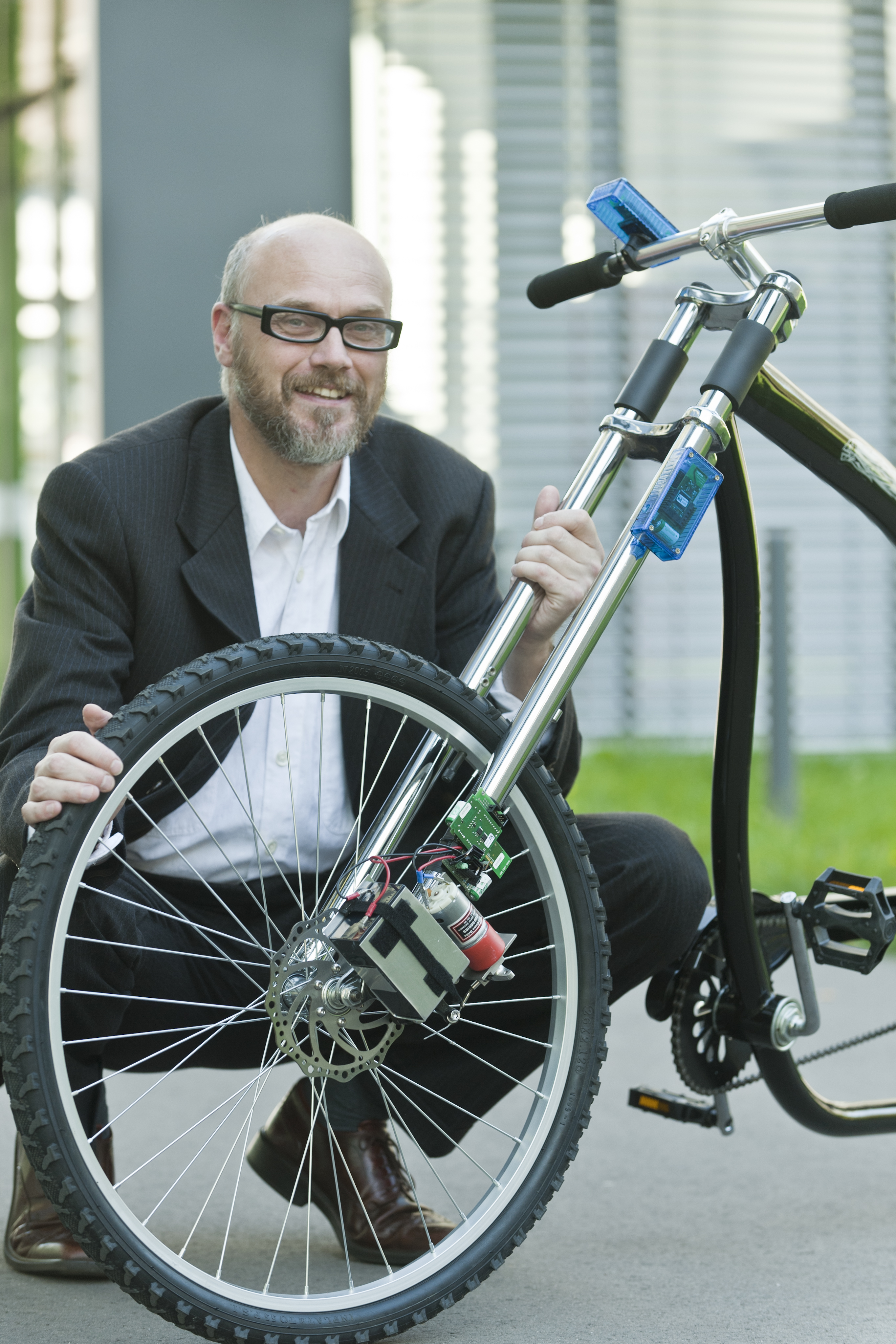A wireless bicycle brake with 11 nines reliability

A day in the life with wireless technologies is sprinkled with connectivity hiccups. Bluetooth keyboards momentarily disconnect, mobile calls drop and WiFi networks unexpectedly go dark.
Given this reality, consider the idea of accelerating down a steep hill on a bicycle with a wireless braking system. Would you trust it?
Now what if the system was designed by German computer scientists and tested with equipment used in control systems for aircraft and chemical factories; and it worked with 99.999999999997 percent reliability.
That's exactly what a group at Saarland University demonstrated with a wireless brake installed on a cruiser bicycle.
The bike does away with a brake lever on the handlebars and cable snaking down the frame, and instead has a rubber handle that only needs to be squeezed and some electronics mounted on the handlebar and fork, the part which attaches the wheel to the frame. The tighter a rider squeezes the handle, the harder the disk brake presses on the wheel to slow the bike.
According to Professor Holger Hermanns, who holds the chair of Dependable Systems and Software at Saarland, the system is not perfect but "acceptable," registering three failures out of a trillion braking attempts.
"Wireless networks are never a fail-safe method. That's a fact that's based on a technological background. Nonetheless, the trend is to set up wireless systems that, like a simple bicycle brake, have to function all the time," he said.
The wireless connection between sender and receiver is accomplished with TDMA, MyriaNed wireless nodes, and the 2.4 GHz ISM band. It takes roughly 250 milliseconds for the cruiser bike to brake once a rider squeezes the rubber grip (150 ms for wireless communication between the components).
The brake is engaged when the pressure sensor activates a sender if a specified pressure threshold is crossed. Then, the sender--contained within a blue plastic box attached to the handlebar--transmits radio signals to a receiver attached at the end of the bicycle's fork. The receiver forwards the signal to an actuator, transforming the radio signal into the mechanical power by which the disk brake is activated.
To give the system a reliability boost, additional senders attached to the bicycle repeatedly send the same signal. In this way, Hermanns and his team of scientists hope to ensure that the signal arrives at the receiver in time, even if the connection causes a delay or fails. They note that simply increasing the number of senders does not result in increased reliability. "If it is not configured correctly, it is possible that three out of five braking attempts fail," Hermanns said.
The functionality can be further improved with an integrated anti-lock braking system and traction control, and that would only take a few adjustments, according to Hermanns.
The next step is for the scientists to bring their wireless bicycle brake concept to bicycle brake manufacturers and find engineers who will help realize it.
If wireless bicycle brakes take off, similar technology can potentially be applied to the derailing systems for bicycles with gears. In addition to delivering comparable or improved performance than the status quo, the weight and size of the electronics and power supply would have to be minimized to beat or match that of cable controlled components before most bicyclists give it serious consideration.
Sources: ScienceDaily, IEEE: A Verified Wireless Safety Critical Hard Real-Time Design (PDF)
